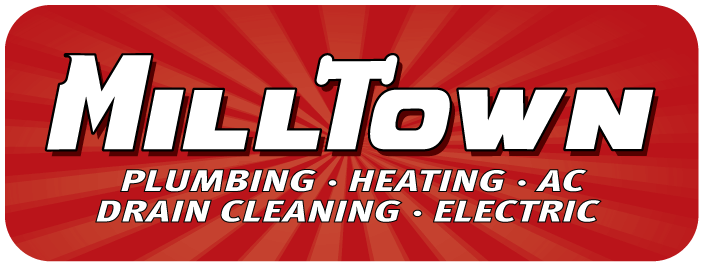8 Energy Efficient Plumbing Fixtures
- Plumbing

Plumbing Solutions by MillTown
Chelmsford, MA
There are several benefits of having an energy-efficient home; for the environment and your health and safety, but for your wallet, too. When it comes to energy-efficient fixtures, most people don’t think about their plumbing. But old and outdated plumbing fixtures don’t only wastewater and energy, they can end up costing you hundreds, if not thousands, of dollars over time.
The Pains of a Low-efficiency Plumbing System
The pains of a low-efficiency plumbing system can be many. And while they may all seem small, together they can create a giant headache for homeowners.
Higher utility bills, a larger carbon footprint, and health and safety risks are some of the main issues associated with low-efficient plumbing systems. Older appliances, such as dishwashers and washing machines, are not only less efficient but are made from outdated technology that can put your and your family’s health at risk.
Older toilets use much more water than newer models to do the same job and this not only wastes water, it can increase your water bill by hundreds of dollars over the life of the toilet. Likewise, new showerheads not only offer more pressure than older models, they use much less water.
Here are eight energy-efficient plumbing features that will not only save you money but reduce your carbon footprint and offer added health and safety benefits:
- Fix and upgrade leaky pipes and fixtures: A leaky faucet can waste up to 20 gallons of water a day. That’s thousands of gallons and possibly hundreds of dollars literally down the drain every year. Leaky pipes and faucets are also a breeding ground for mold spores, which can have serious health implications. Plus, the water damage caused by leaky fixtures can end up costing tens of thousands of dollars to fix when left untreated.
- Low-flow showerheads: Low-flow showerheads have come a long way since they were first introduced more than two decades ago. Twenty years of technological advancements mean more pressure and less water. The showerheads of yesteryear used five to eight gallons of water per minute (GPM). Current standards for today’s units are 2.5 gallons per minute and low-flow showerheads use as little as 2 gallons per minute.
- Insulate pipes: When carrying hot water to plumbing fixtures, heat can get lost along the way. Pipe insulation helps to lower the heat loss. By doing so, you can reduce your water heater temperature to 120-degrees or lower. While paying someone to insulate the pipes in your home may not make economic sense, it’s a great option to consider during new construction or a major remodel.
- Low-flow faucets: Replacing your current sink faucets with low-flow faucets can save water without reducing water pressure. In fact, these new fixtures can drop water usage from 2.5 gallons per minute to 1.5 gallons per minute, saving up to 13,000 gallons of water a year for a typical household. This translates to hundreds of dollars a year in savings. Some kitchen faucets also offer built-in filtered water features that can help you cut down on your bottled water consumption.
- High-efficiency toilets (HET): More than 40 percent of U.S. households use older toilets that use 3.5 or more gallons per flush. Newer toilets use as little as one gallon per flush and even offer dual flushing capabilities, one of the most energy-efficient options for homeowners. Look for the Environmental Protection Agency’s “water sense” label, which shows that the toilet has been tested for maximum flushing power all while saving thousands of gallons of water a tear.
- Tankless water heaters: Tankless water heaters, also called on-demand water heaters, only heat water when needed. While these units can be expensive, their energy-saving capabilities outweigh the upfront cost. A typical water heater keeps 40 to 50 gallons of water hot at all times. As you can imagine, this is incredibly wasteful and inefficient.
- Update washer and dryer: Older washing machines have a top-loading feature in which water fills up from the bottom. Newer, front-loading machines use up to 50 percent less water. Modern dryers have more efficient heating units that can dry clothes faster, saving energy. It is also important to note that only washing full loads of laundry can save a lot of money.
- Regular maintenance: If you’re concerned about wasting money or energy, proper maintenance of your plumbing fixtures is important. Regular maintenance and plumbing check-ups can help you detect any small problems before they become major, and can help save money down the road.
Looking To Upgrade? Call MillTown
Milltown Plumbing is a family-owned and operated business established in 1979. Ever since the company was founded, we’ve stayed true to our commitment to the people of Northeastern Massachusetts and Southern New Hampshire: our licensed and bonded plumbers offer honest answers to all of your plumbing questions, and we provide cost-effective, permanent solutions to keep your home healthy and safe. That commitment to your satisfaction has guided us for over 35 years of commercial and residential plumbing service, and the result is that homeowners in Northeastern Mass and Southern NH trust us more than anyone else for quality plumbing repairs and emergency service.
Call us today to schedule your service!











